If we take off all the glass panels and venture inside, we again find an uncluttered aesthetic with minimalist branding, a Corsair lettering with signal yellow dot on the cable cover and a 5000X lettering on the end of the PSU cover.
Three 120 mm RGB fans with 8 individually addressable LEDs each are pre-installed in the front. The cables have already been pre-routed and tied together in the Velcro fasteners on the back.
To be able to mount a 3x 120 mm radiator in the front as well, Corsair supplies an alternative end of the PSU cover. The replaceable covers are made of plastic and can be changed quickly by loosening two thumbscrews.
From the front, the air intake is also equipped with a removable and magnetic dust filter.
On the back, the 5000 Series offers seven horizontal and two vertical PCI-Express slots for expansion cards and a mounting option for a 120 mm fan. A riser cable for using the vertical PCIe slots is unfortunately not included.
While the cable guides to the right of the mainboard tray, which are hidden by the RapidRoute cover, are equipped with rubber grommets, the visible cable guides above the mainboard tray have none. While these should also be hidden after installing a radiator, rubber grommets would have been nice here as well. Speaking of radiators, there are mounting options in the roof for three 120 mm or two 140 mm fans or radiators. Unfortunately, the offset of the 120mm rails is towards the motherboard and not away from it, so thick radiators could block the RAM slots.
The PSU cover offers two cable guides for routing front IO towards the motherboard and for SSDs, should you choose to mount them here. Ventilation slots have been integrated under the two SSD slots so that the PSU can be mounted on both sides.
If you look at the right side panel from the inside, you can see the steel frame with air intake inserted into the glass cutout and the magnetic dust filter attached there. At the edge of the panel we also find the 4 attachment hooks of the panel to the case core, which are fixed to the inside of the glass panel with a steel frame.
On the other side of the panel, at the level of the thumbscrews, there is a spherical lug for latching onto the case core and a small gripping surface worked into the metal frame on the inside. The thumbscrews are captive so they can’t get lost.
Regarding the suspension of the glass side panels on the housing, however, I must now express a major criticism. Since the lugs on the case have to be engaged and disengaged with quite a lot of resistance, but the panels are only inserted into the case on the other side and not suspended with a hinge, the panels tend to jump off the case uncontrollably during disassembly. The spartan grip surfaces without a recess add to the problem.
So potential users should be warned about the somewhat recalcitrant mechanism. Here it is recommended to either use a second pair of hands to hold the panel on the case at the same time or to use a soft pad below to catch the panel after the jump.
On the back, the aesthetics behind the removed glass panel are also sleek and tidy, especially thanks to the little metal door that elegantly hides all the cables. Furthermore, we find mounts for three 120 mm fans on the left, which can effectively only be used after removing the “RapidRoute” cable routing to the motherboard tray. Fans would fit in the exactly 25 mm of space, but would blow against a wall or under the power supply cover. So you have to choose between chic and functional.
By the way, the door is really one and hinged with two pin hinges on the right. So there was room in the budget for hinges, but unfortunately it was put in the wrong place. On the other side, the door is held closed only by a weak magnet, which pops open at the slightest messy cable. This is where a plugged panel with strict ball mounts, like the ones used on the side panels, would do a better job. So if I could wish for anything, it would be that the suspension between side panels and cable door would be swapped.
Behind the cable door you will find the two controllers with 6 connectors each for PWM fans and RGB elements. The latter is called iCUE Lighting Node CORE by Corsair, which is compatible with the Corsair iCUE software. Furthermore, there are 3 trays for SSDs and a fourth mounting option next to the RGB controller, whose steel plate can be removed for this purpose by loosening a single thumbscrew.
Under the PSU cover we find space for – who would have thought it – the PSU, and a cage for HDDs with two slides, which also contain the accessories when shipping. The cables from the fans and front IO are pre-routed and neatly tucked away with the Velcro straps. Around the rear wall of the mainboard tray there are also numerous holders for cable ties. This makes cable management child’s play.
Speaking of accessories, included is the usual amount of screws for motherboard, SSDs, HDDs and fans, as well as a right-angle adapter for internal USB 3 and plenty of Corsair-branded Velcro for cable management. Especially the last two are welcome additions for building a tidy system with neatly stowed cables. In order to keep the various glass surfaces clean and free of fingerprints, a microfiber cleaning cloth would have been desirable in the scope of delivery.















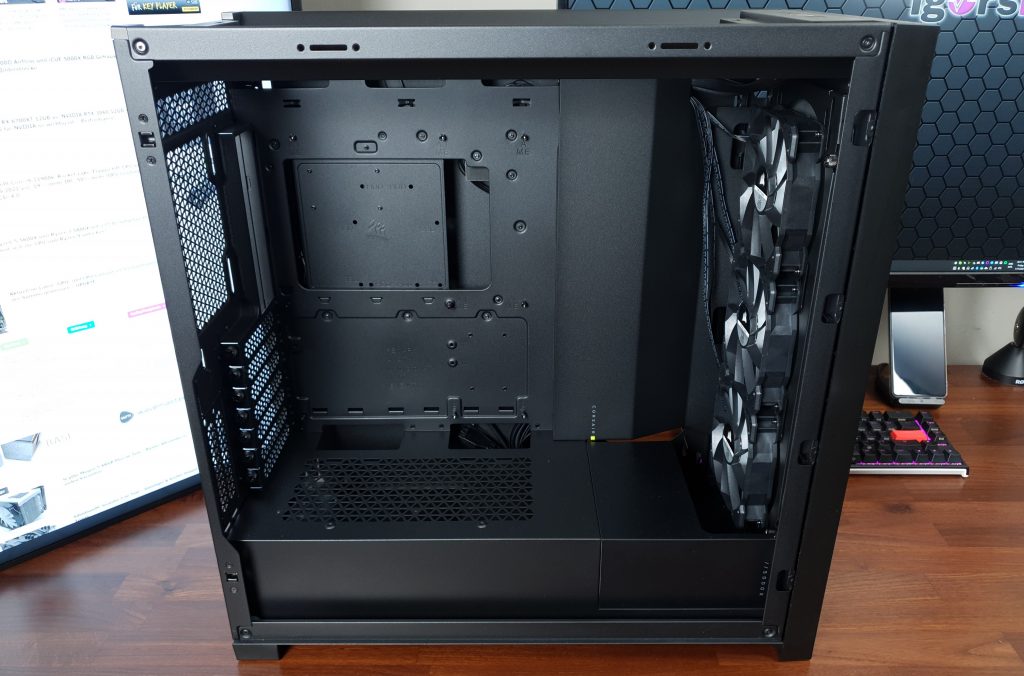
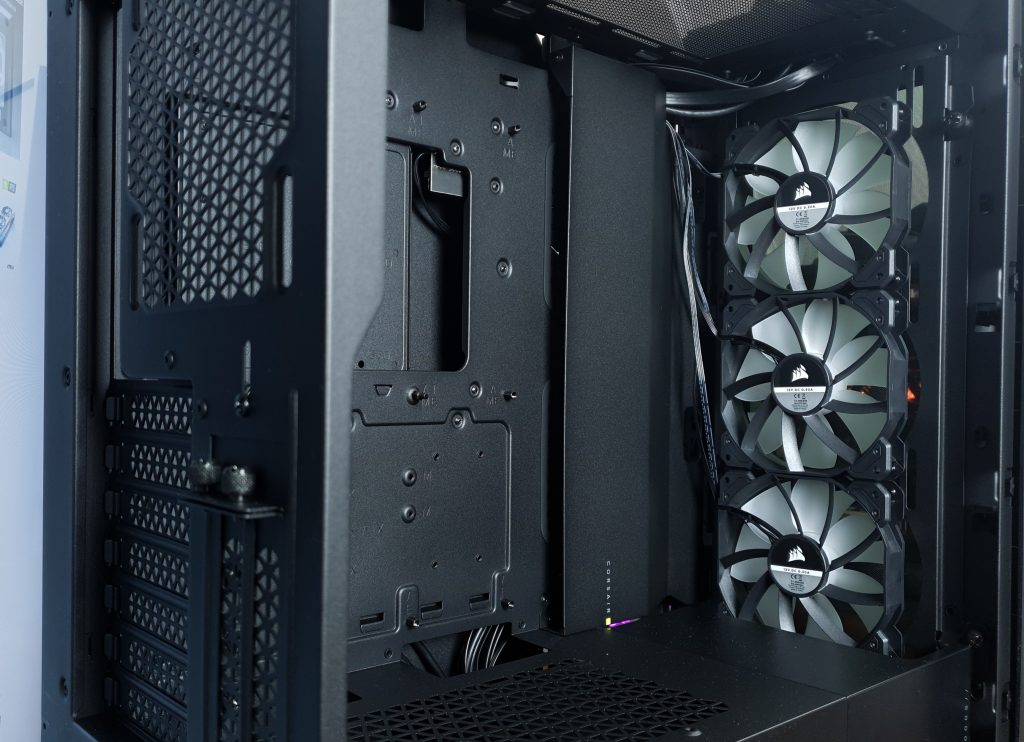
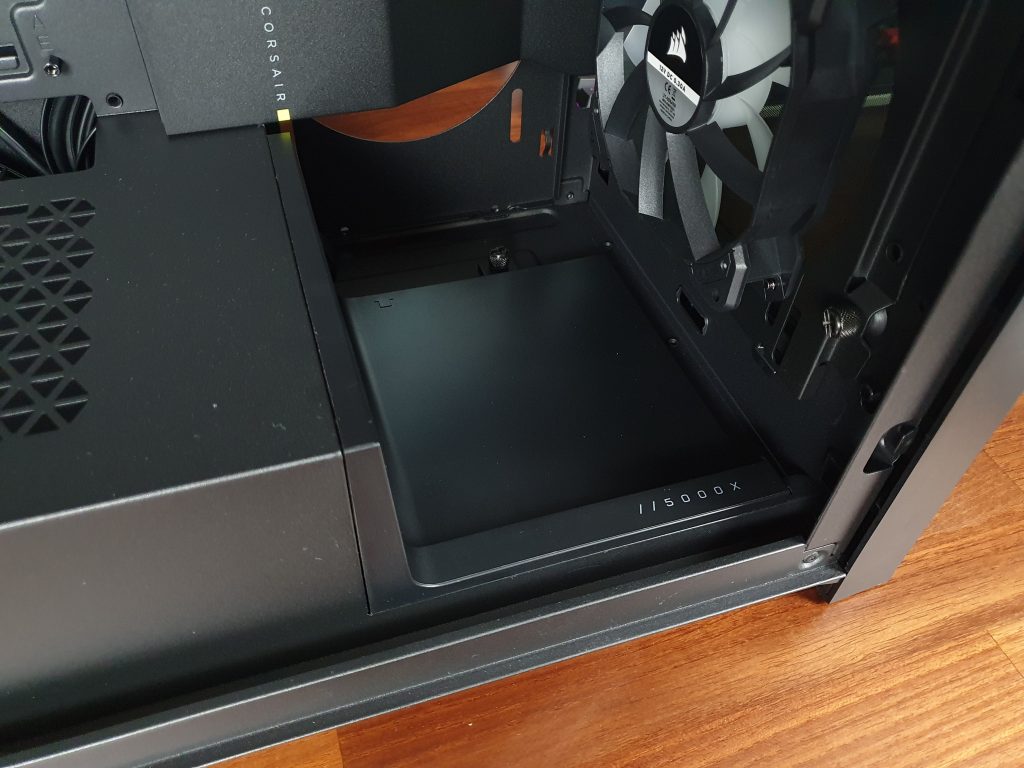
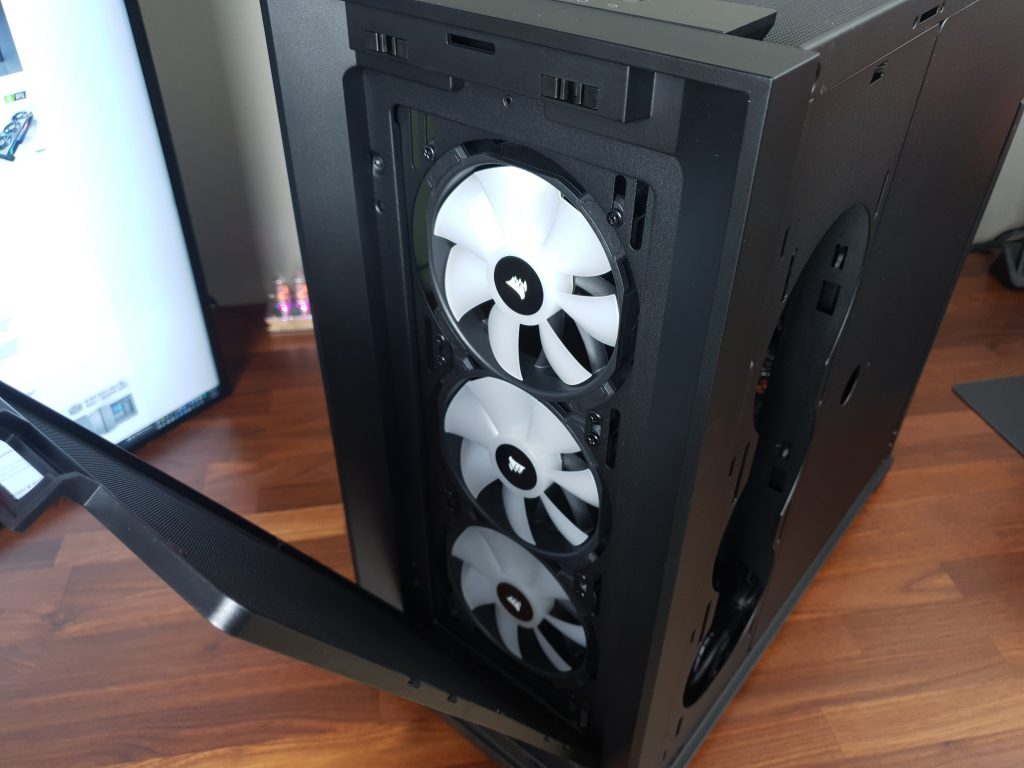
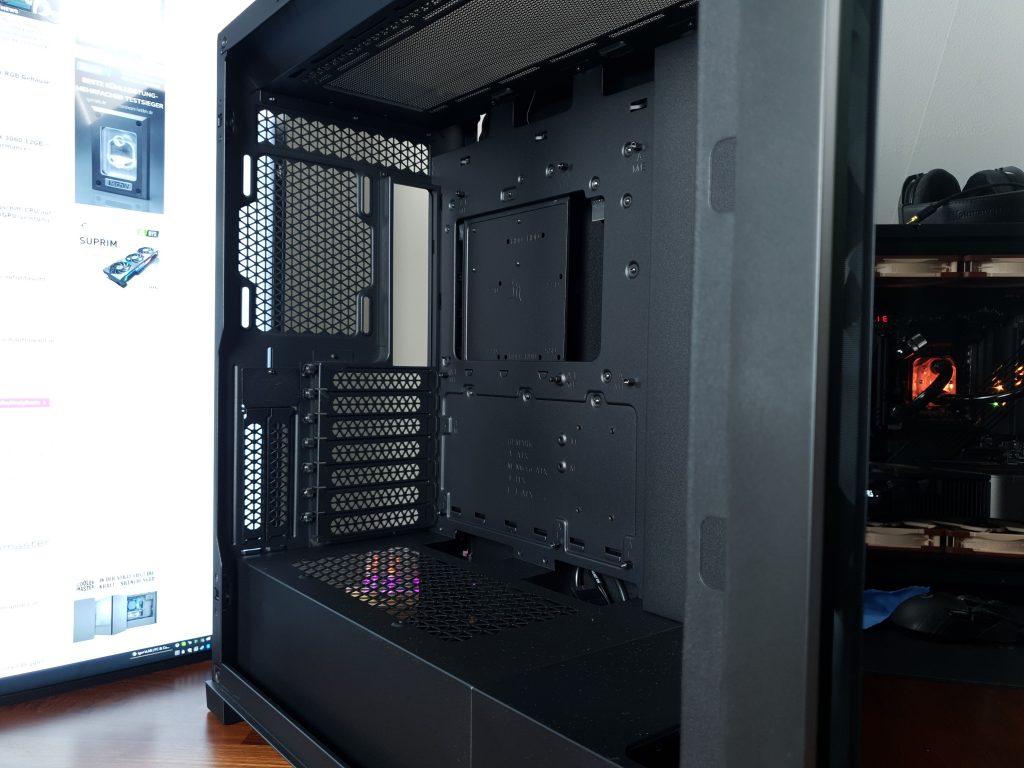
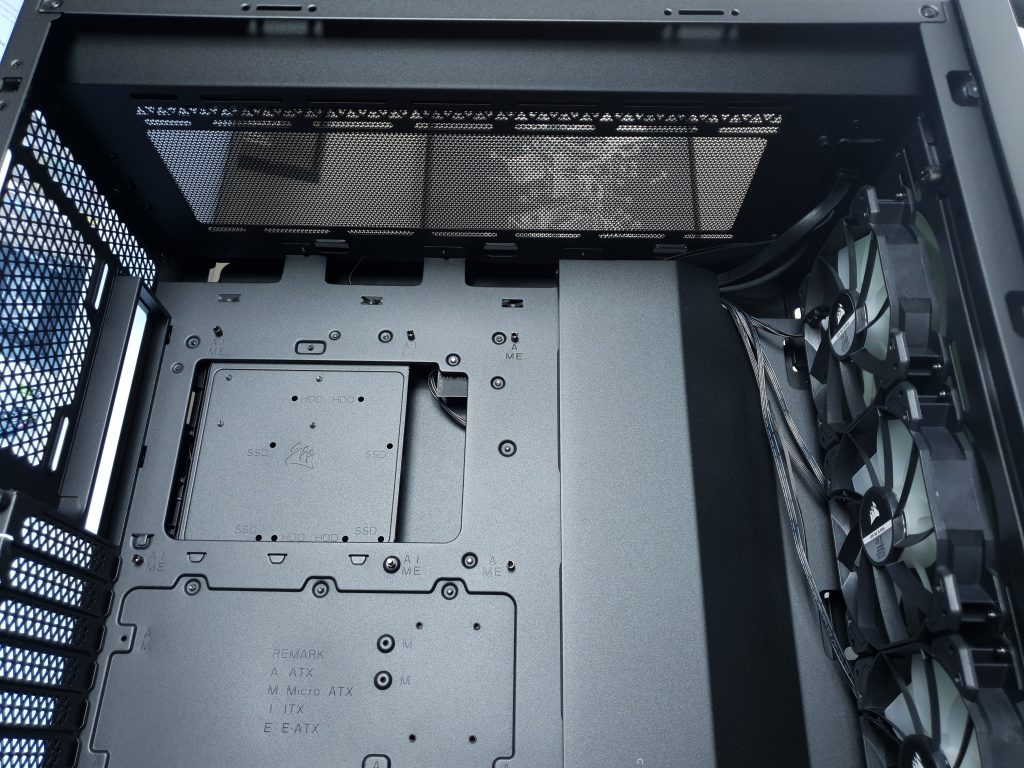
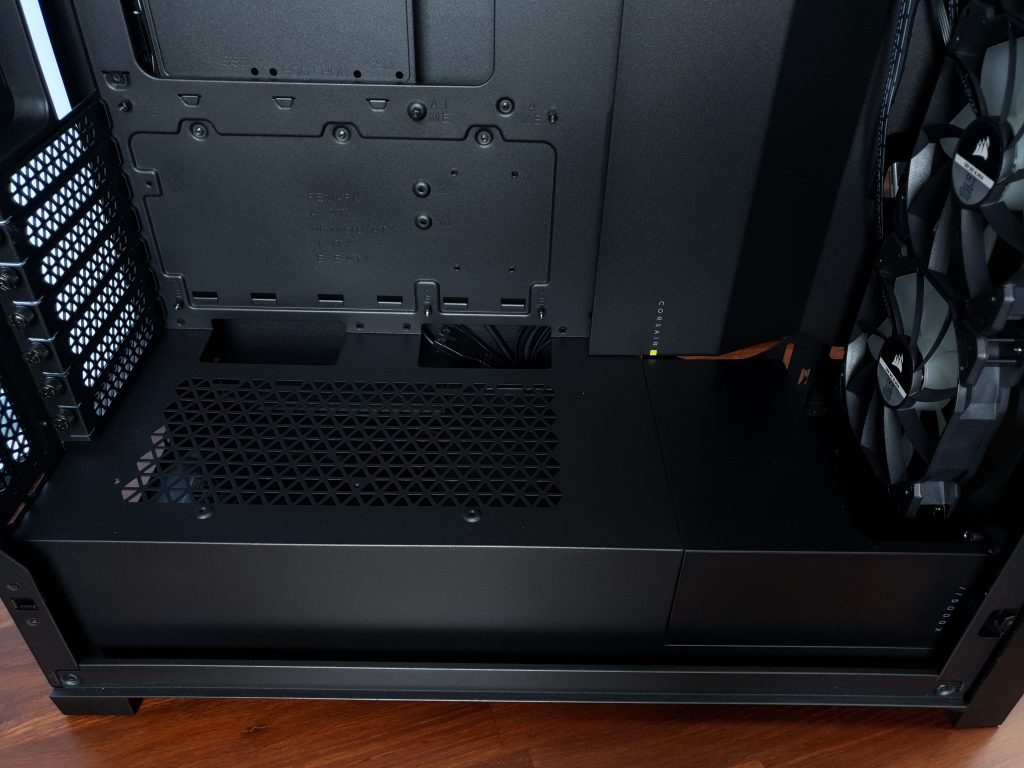
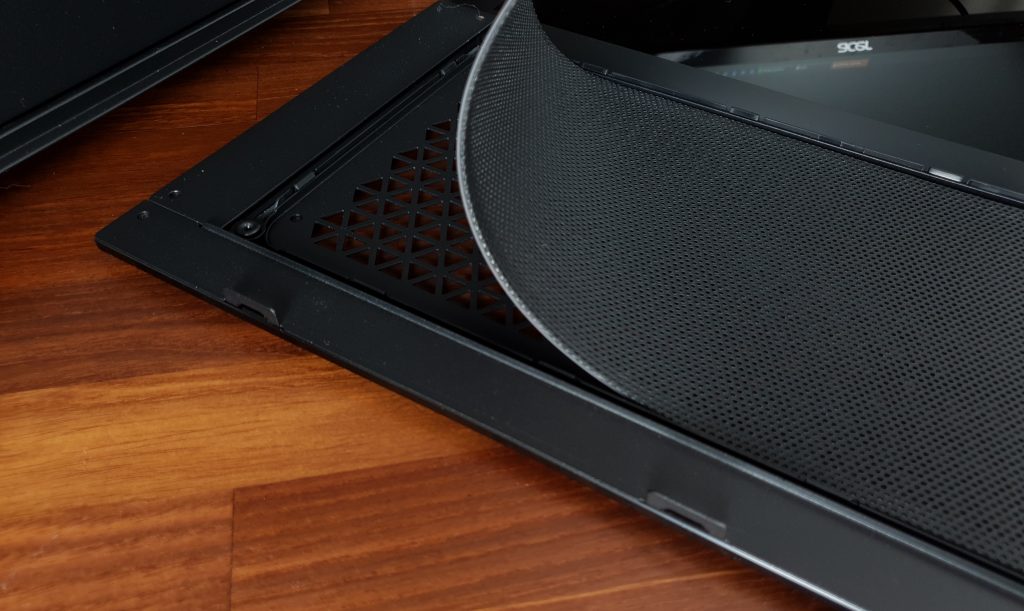
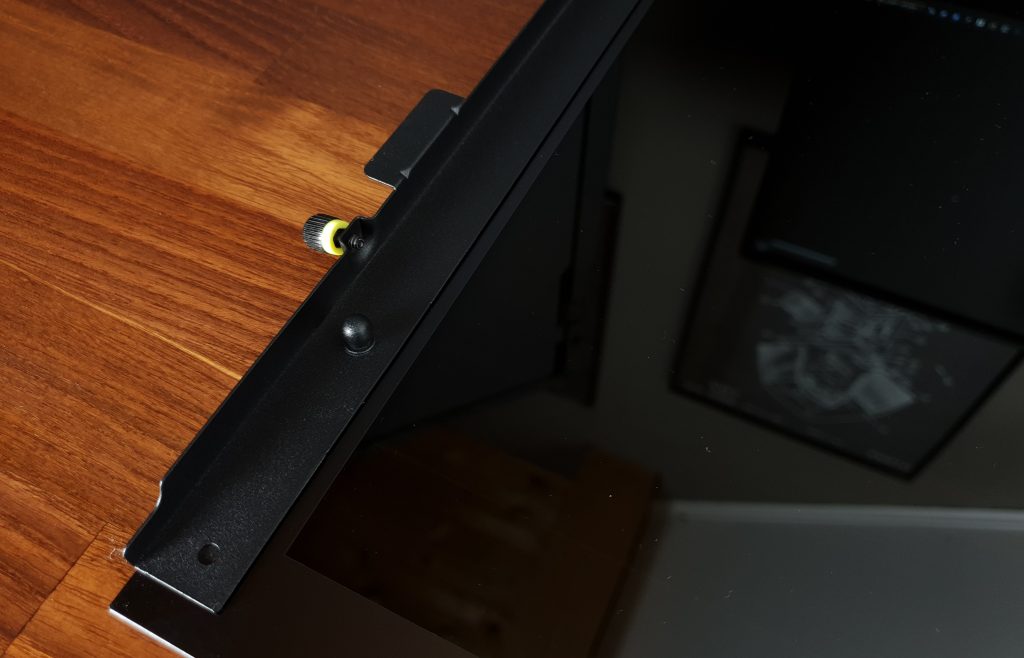
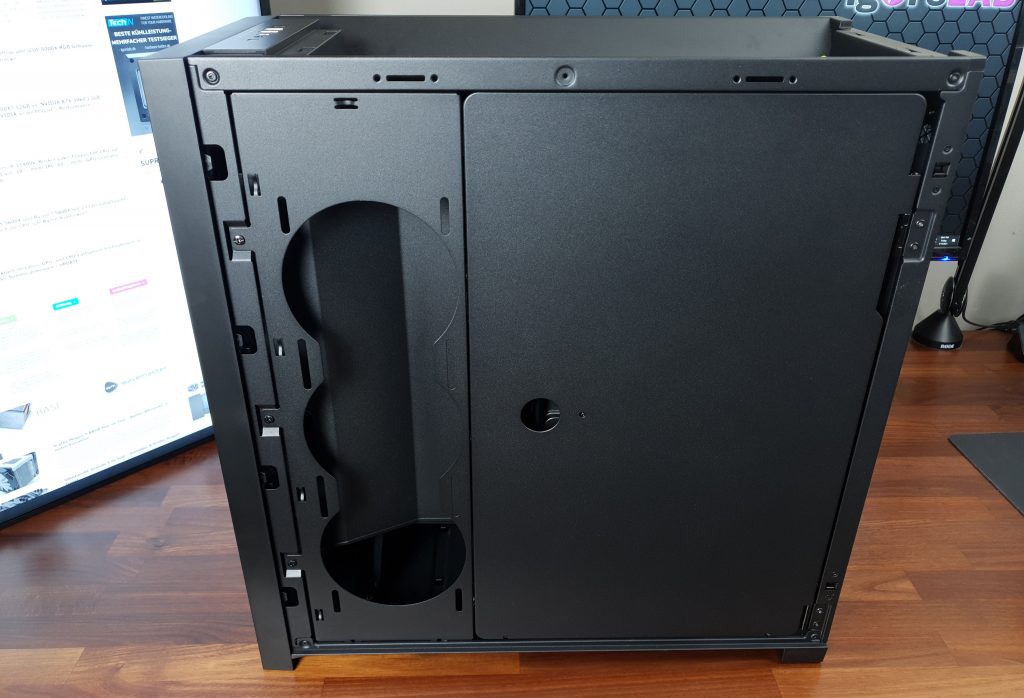
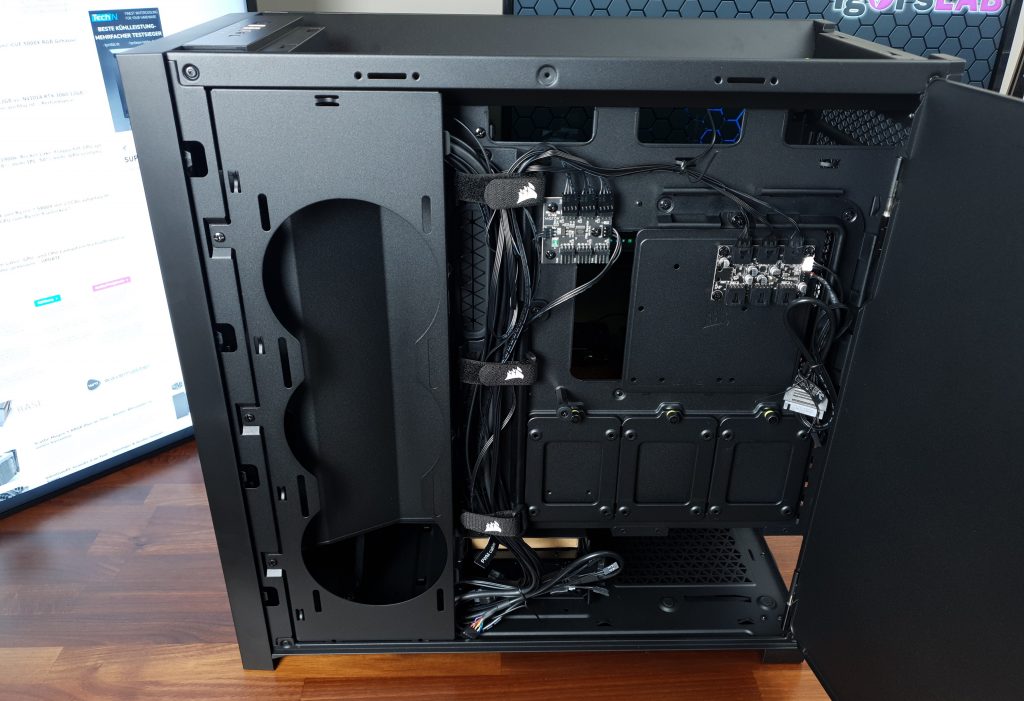
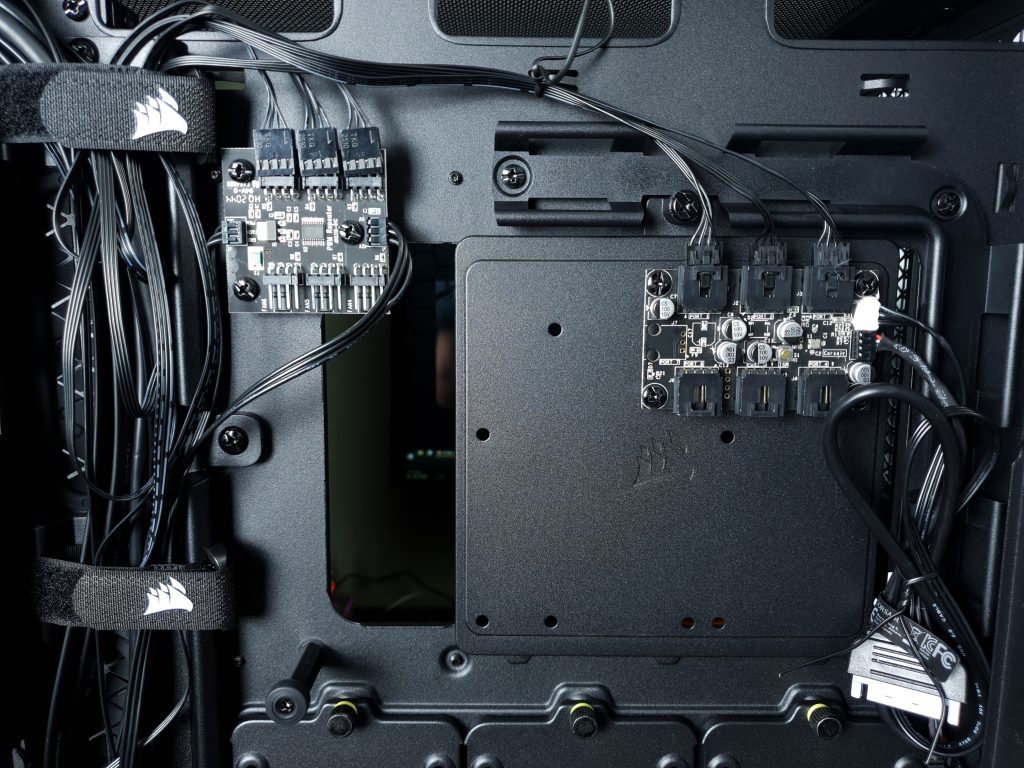
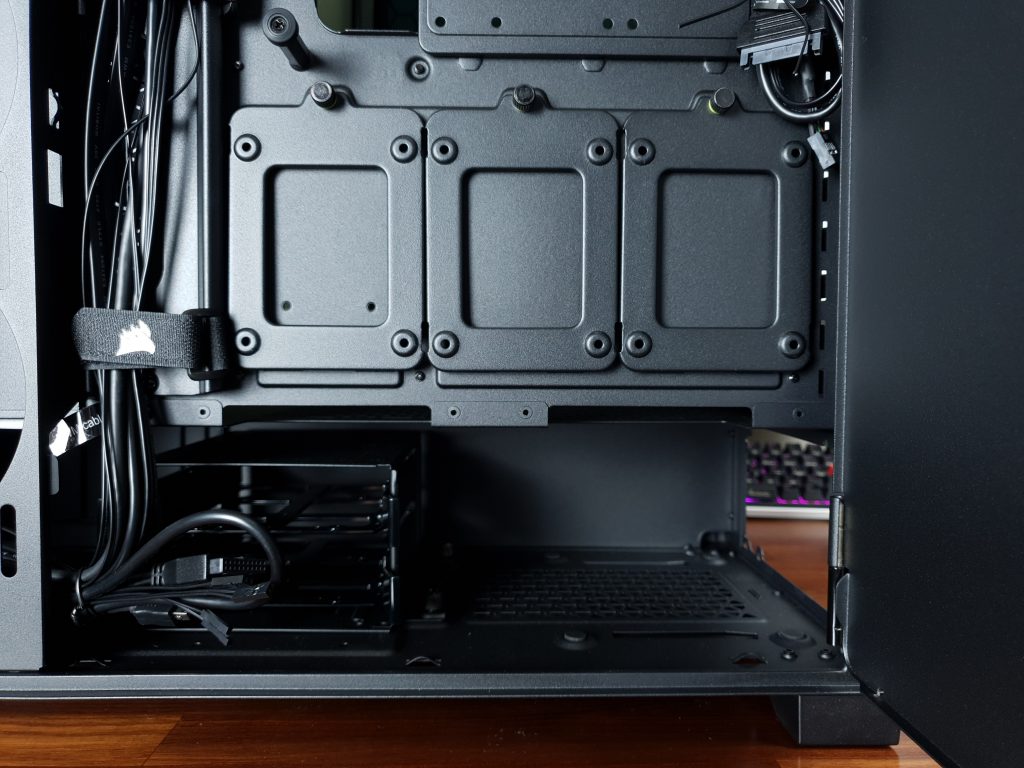
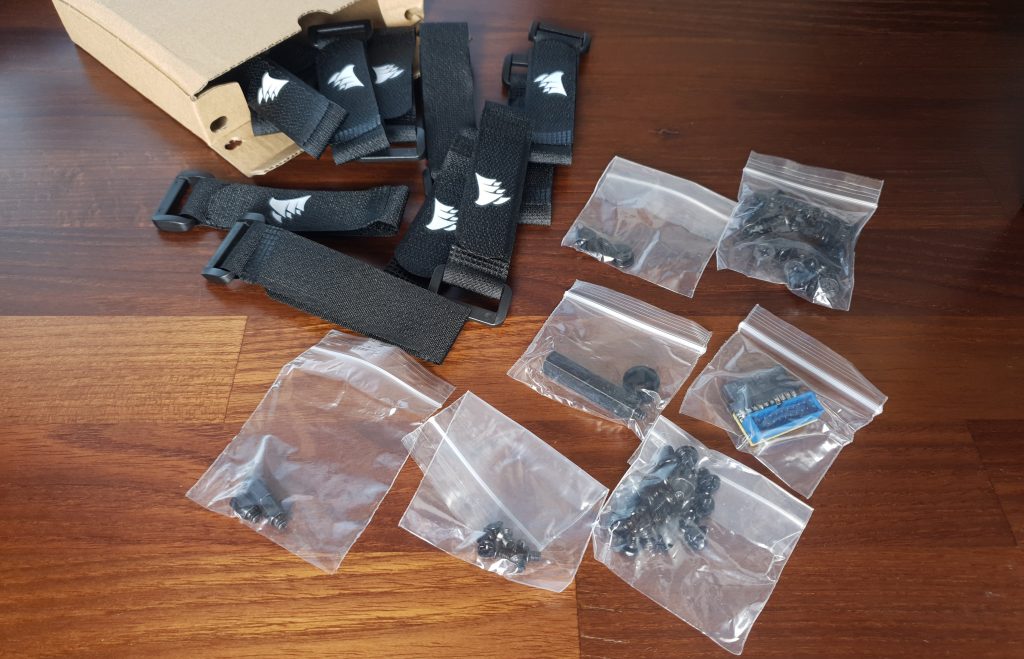


















Kommentieren